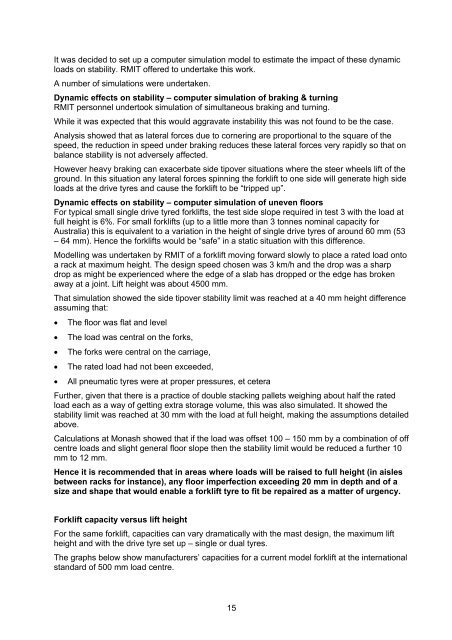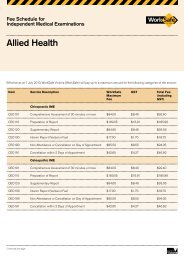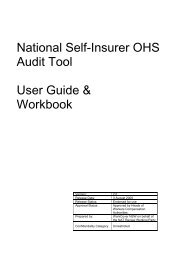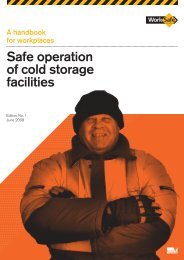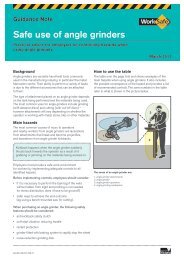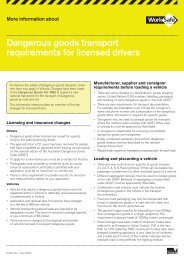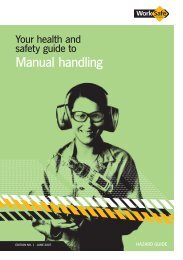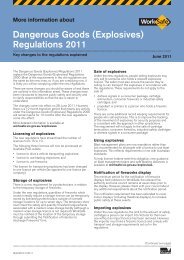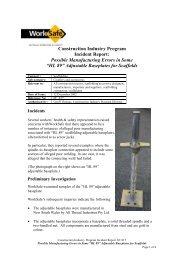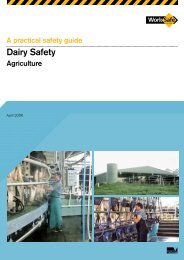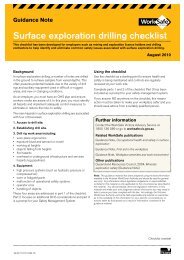Forklift stability and other technical safety issues - Monash University
Forklift stability and other technical safety issues - Monash University
Forklift stability and other technical safety issues - Monash University
You also want an ePaper? Increase the reach of your titles
YUMPU automatically turns print PDFs into web optimized ePapers that Google loves.
It was decided to set up a computer simulation model to estimate the impact of these dynamicloads on <strong>stability</strong>. RMIT offered to undertake this work.A number of simulations were undertaken.Dynamic effects on <strong>stability</strong> – computer simulation of braking & turningRMIT personnel undertook simulation of simultaneous braking <strong>and</strong> turning.While it was expected that this would aggravate in<strong>stability</strong> this was not found to be the case.Analysis showed that as lateral forces due to cornering are proportional to the square of thespeed, the reduction in speed under braking reduces these lateral forces very rapidly so that onbalance <strong>stability</strong> is not adversely affected.However heavy braking can exacerbate side tipover situations where the steer wheels lift of theground. In this situation any lateral forces spinning the forklift to one side will generate high sideloads at the drive tyres <strong>and</strong> cause the forklift to be “tripped up”.Dynamic effects on <strong>stability</strong> – computer simulation of uneven floorsFor typical small single drive tyred forklifts, the test side slope required in test 3 with the load atfull height is 6%. For small forklifts (up to a little more than 3 tonnes nominal capacity forAustralia) this is equivalent to a variation in the height of single drive tyres of around 60 mm (53– 64 mm). Hence the forklifts would be “safe” in a static situation with this difference.Modelling was undertaken by RMIT of a forklift moving forward slowly to place a rated load ontoa rack at maximum height. The design speed chosen was 3 km/h <strong>and</strong> the drop was a sharpdrop as might be experienced where the edge of a slab has dropped or the edge has brokenaway at a joint. Lift height was about 4500 mm.That simulation showed the side tipover <strong>stability</strong> limit was reached at a 40 mm height differenceassuming that:• The floor was flat <strong>and</strong> level• The load was central on the forks,• The forks were central on the carriage,• The rated load had not been exceeded,• All pneumatic tyres were at proper pressures, et ceteraFurther, given that there is a practice of double stacking pallets weighing about half the ratedload each as a way of getting extra storage volume, this was also simulated. It showed the<strong>stability</strong> limit was reached at 30 mm with the load at full height, making the assumptions detailedabove.Calculations at <strong>Monash</strong> showed that if the load was offset 100 – 150 mm by a combination of offcentre loads <strong>and</strong> slight general floor slope then the <strong>stability</strong> limit would be reduced a further 10mm to 12 mm.Hence it is recommended that in areas where loads will be raised to full height (in aislesbetween racks for instance), any floor imperfection exceeding 20 mm in depth <strong>and</strong> of asize <strong>and</strong> shape that would enable a forklift tyre to fit be repaired as a matter of urgency.<strong>Forklift</strong> capacity versus lift heightFor the same forklift, capacities can vary dramatically with the mast design, the maximum liftheight <strong>and</strong> with the drive tyre set up – single or dual tyres.The graphs below show manufacturers’ capacities for a current model forklift at the internationalst<strong>and</strong>ard of 500 mm load centre.15


